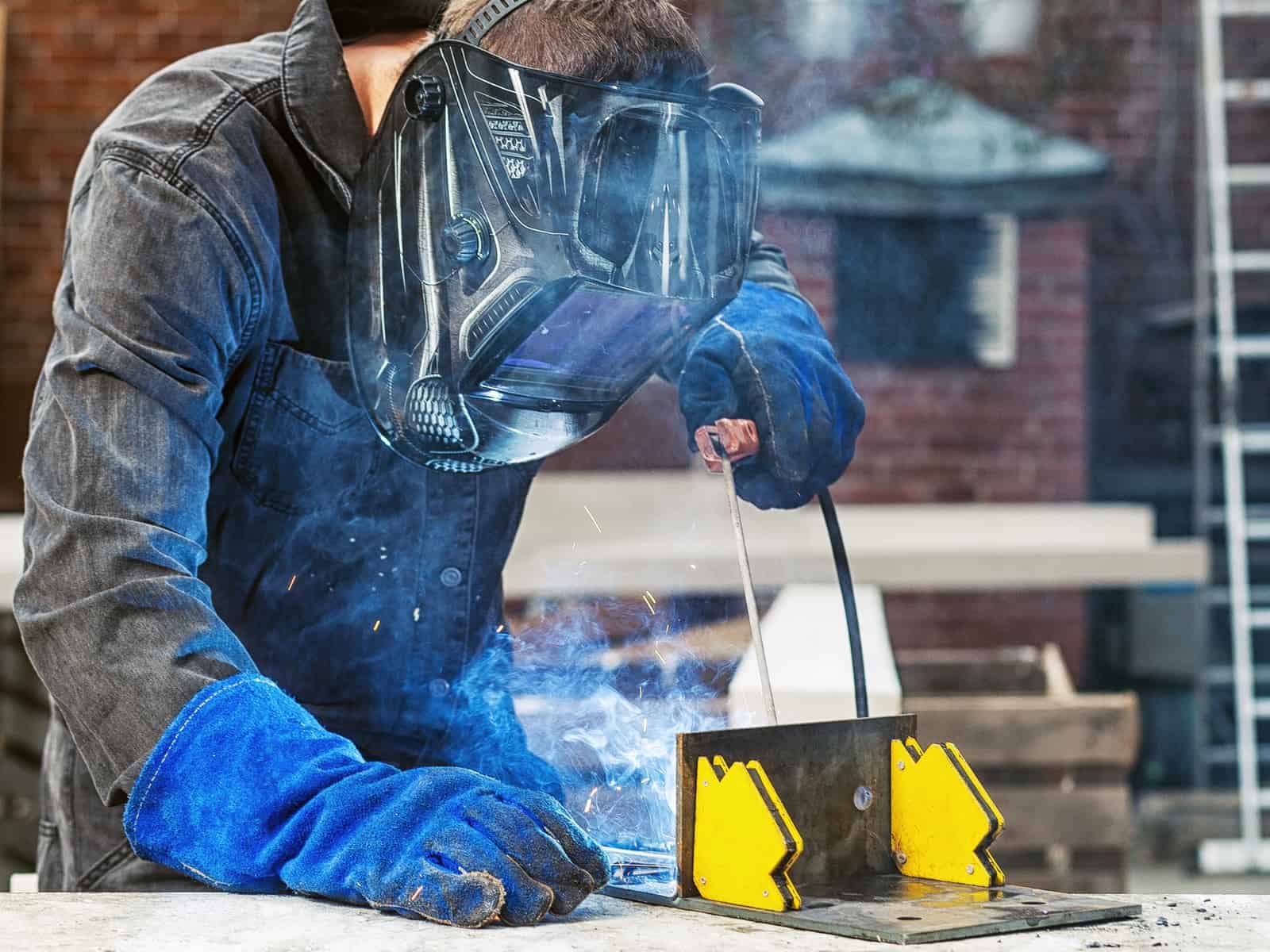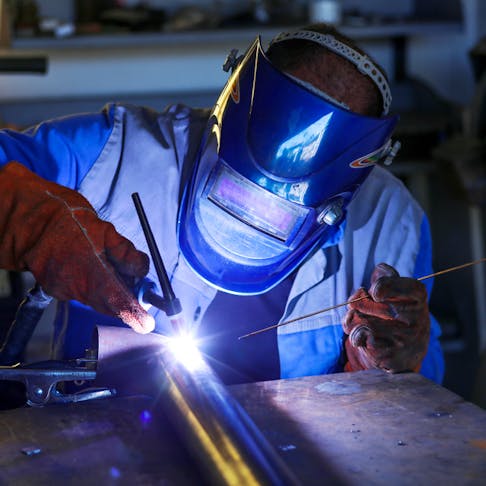All About Welding: Key Insights Into Techniques and Ideal Practices for Success
Welding encompasses a variety of strategies, each matched for certain materials and applications. Understanding these approaches, such as GMAW, SMAW, and TIG, is crucial for achieving excellent results. The appropriate tools and safety and security practices can not be neglected. As prep work and troubleshooting play important functions in the welding process, understanding these elements can substantially enhance the high quality of the last product. What are the vital elements that ensure an effective weld?
Understanding Various Welding Methods
Welding techniques incorporate a variety of methods, each fit to particular applications and materials. Amongst the most common strategies are Gas Steel Arc Welding (GMAW), Secured Steel Arc Welding (SMAW), and Tungsten Inert Gas Welding (TIG) GMAW, also understood as MIG welding, is prominent for its speed and convenience, making it suitable for slim products. SMAW, or stick welding, is favored for its simplicity and performance in outside settings, especially with thicker steels. TIG welding provides precision and control, making it suitable for detailed work and non-ferrous steels (Montana Mobile Welding and Repair Belgrade Fabrication). Each method has its special advantages and factors to consider, allowing welders to select the finest method based on the project's requirements, product kind, and wanted outcomes. Understanding these strategies is essential for effective welding
Crucial Welding Tools and Devices
While various welding techniques require particular abilities, the best equipment and devices are equally essential for accomplishing quality outcomes. Essential welding devices consists of welding machines, which vary relying on the strategy-- such as MIG, TIG, or stick welding. Protective equipment, including handwear covers, aprons, and safety helmets, warranties safety and comfort during the procedure. Additionally, clamps and fixtures help protect products in position, guaranteeing precision in welds. Consumables like welding rods, wire, and shielding gas are also critical components that influence the top quality of the weld. Additionally, tools such as grinders and cutters promote surface area preparation and post-weld ending up, adding to an expert outcome. Buying top quality devices eventually enhances the efficiency and performance of welding projects.
Security Practices in Welding
Appropriate security techniques are important in the welding industry to secure employees from potential risks. Welders must put on ideal individual protective equipment (PPE), including helmets with appropriate shading, handwear covers, and flame-resistant clothes. Appropriate ventilation is vital to reduce direct exposure to unsafe fumes and gases produced during the welding process. Additionally, employees must be trained in the appropriate handling of welding equipment to stop mishaps. Fire precaution, such as keeping combustible materials far from the welding area and having fire extinguishers conveniently offered, are essential. Regular evaluations of equipment and work areas can help determine potential hazards before they bring about accidents. By sticking to these safety techniques, welders can create a safer working environment and decrease threats connected with their trade.
Readying Materials for Welding
Preparing materials for welding is an important action that significantly affects the high quality and stability of the last product (Belgrade). Proper preparation entails cleansing the surfaces to remove contaminants such as rust, dust, and oil, which can compromise the weld. Strategies such as grinding, sanding, or utilizing solvents are frequently used to achieve a clean surface. Additionally, guaranteeing that the materials mesh snugly is vital; gaps can lead to weak welds. It's likewise essential to think about the alignment and positioning of the parts, as this will certainly impact the convenience of welding and the final result. Finally, selecting the ideal filler product and guaranteeing compatibility with the base steels is crucial for accomplishing strong, resilient welds
Tips for Getting High-Quality Welds
Accomplishing top quality welds requires attention to information and adherence to best methods throughout the welding procedure. Appropriate joint preparation is essential, making certain surfaces are complimentary and tidy from impurities. Selecting the proper filler material and welding method based on the base metals is vital for ideal bonding. Preserving consistent traveling rate and angle while welding can protect against defects and advertise uniformity. Furthermore, controlling warmth input is vital; too much warm can bring about bending and damaged joints. If essential, consistently checking the welds throughout the procedure permits for immediate modifications. Lastly, ln 25 welder using suitable post-weld therapies, such as cleansing and anxiety alleviation, can enhance the toughness and integrity of the weld, ultimately ensuring an effective end result.
Troubleshooting Usual Welding Issues
Welding usually presents obstacles that can impact the top quality and integrity of the final product. Usual problems such as porosity, inconsistent weld grains, and getting too hot can arise, each requiring certain fixing strategies. Comprehending these troubles is important for welders to boost their skills and accomplish suitable results.
Porosity Troubles Described
Although porosity can often be forgotten, it stays an essential problem in welding that can endanger the integrity of a finished item. Porosity refers to the presence of little gas pockets within the weld bead, which can lead and damage the joint to early failing. This issue commonly emerges from contaminants, dampness, or improper protecting gas protection throughout the welding procedure. To minimize porosity, see this page welders ought to confirm that the base products are completely dry and clean, utilize appropriate protecting gases, and preserve constant welding specifications. On a regular basis examining the tools and environment can likewise aid identify potential issues before they materialize in the weld. Addressing porosity efficiently is necessary for attaining strong, durable welds that fulfill high quality requirements.

Irregular Weld Beans
Inconsistent weld grains can significantly affect the quality and toughness of a finished item. Various aspects add to this problem, including inappropriate travel speed, incorrect amperage settings, and irregular electrode angles. When the welder relocates too rapidly, a bead may show up narrow and do not have infiltration, while relocating also slowly can create extreme build-up. Furthermore, using the incorrect amperage can cause either undercutting or excessive spatter, both of which compromise weld stability. The welder's technique, such as inconsistent torch activity, can also result in uneven grain appearance. To mitigate these issues, welders ought to concentrate on preserving steady, controlled movements and guaranteeing appropriate equipment setups to accomplish uniformity in their welds. Uniformity is crucial to achieving reputable and solid welds.
Getting Too Hot and Bending Issues
Excessive warm throughout the welding procedure can result in considerable getting too hot and warping problems, impacting the structural stability of the work surface. These issues typically show up as distortion, which can compromise positioning and fit-up, making more setting up challenging. Variables adding to overheating include the choice of welding criteria, such as voltage and take a trip speed, along with the kind of product being bonded. To mitigate these concerns, welders must keep consistent traveling speed and appropriate warmth input while keeping an eye on the workpiece temperature. Additionally, pre-heating or post-weld warm treatment can aid relieve tensions triggered by quick air conditioning - Belgrade. Routine evaluation and adherence to ideal techniques are necessary in stopping getting too hot and guaranteeing the durability and dependability of bonded frameworks
Often Asked Questions
What Are the Job Opportunities in the Welding Industry?
The welding sector uses diverse job chances, including placements as welders, examiners, designers, and instructors. Specialists can operate in production, building, aerospace, and automotive sectors, taking advantage of strong demand and competitive wages in various functions.
Exactly How Can I Enhance My Welding Speed Without Sacrificing Top Quality?
To improve welding speed without compromising high quality, one should exercise reliable strategies, maintain devices, enhance setups, and enhance hand-eye coordination. Normal training and seeking responses can likewise considerably add to achieving faster, high-quality welds.
What Accreditations Are Offered for Welders?
Countless qualifications exist for welders, consisting of those from the American why not look here Welding Culture (AWS), the National Center for Building And Construction Education and Study (NCCER), and various industry-specific companies. These credentials boost employability and demonstrate skill efficiency.
Just How Does Welding Impact the Residences of Metals?
Welding influences the buildings of metals by altering their microstructure, which can lead to adjustments in firmness, ductility, and toughness. Warm input and air conditioning rates throughout the process significantly influence these product qualities.
Can I Weld Dissimilar Metals With Each Other?
